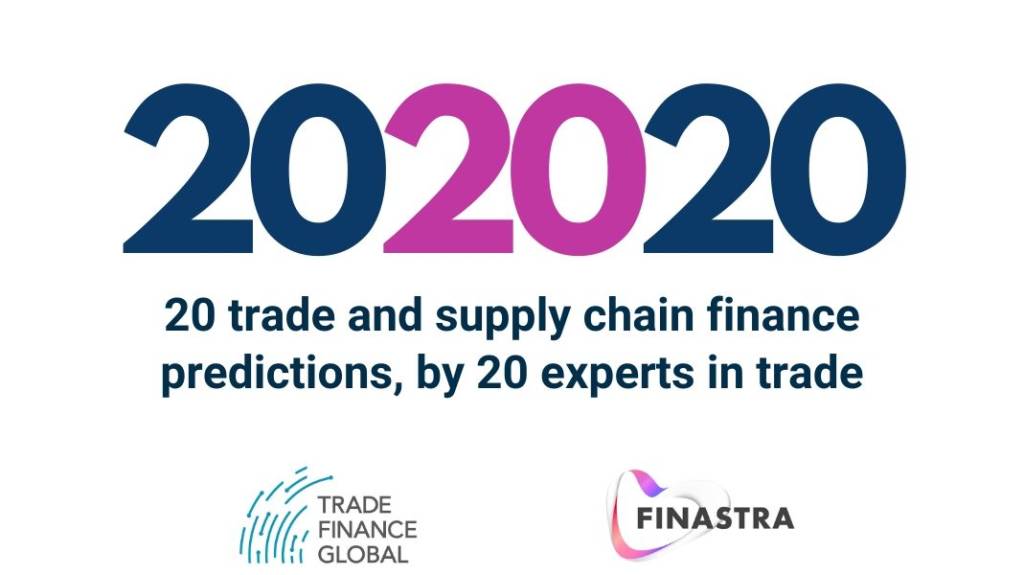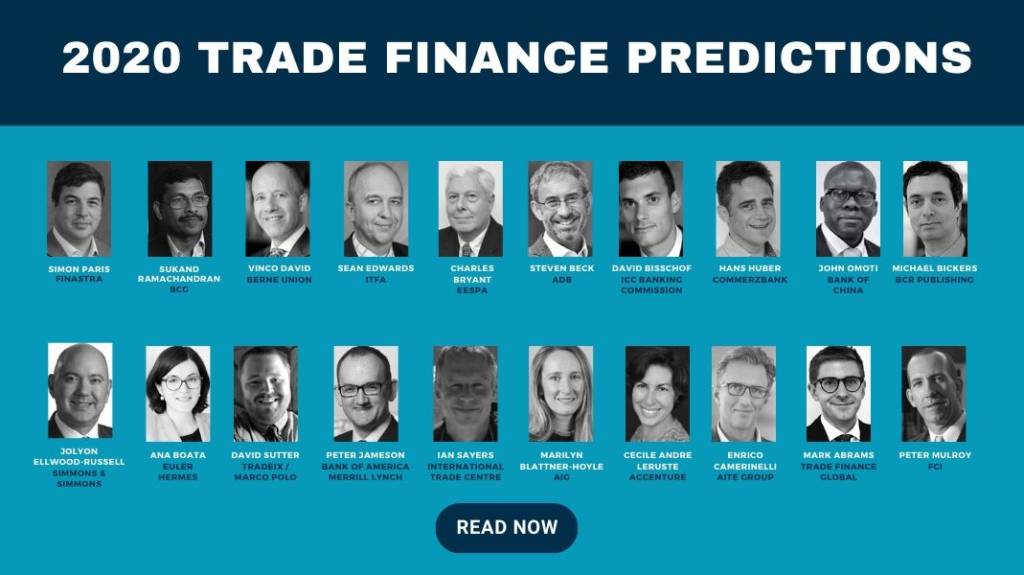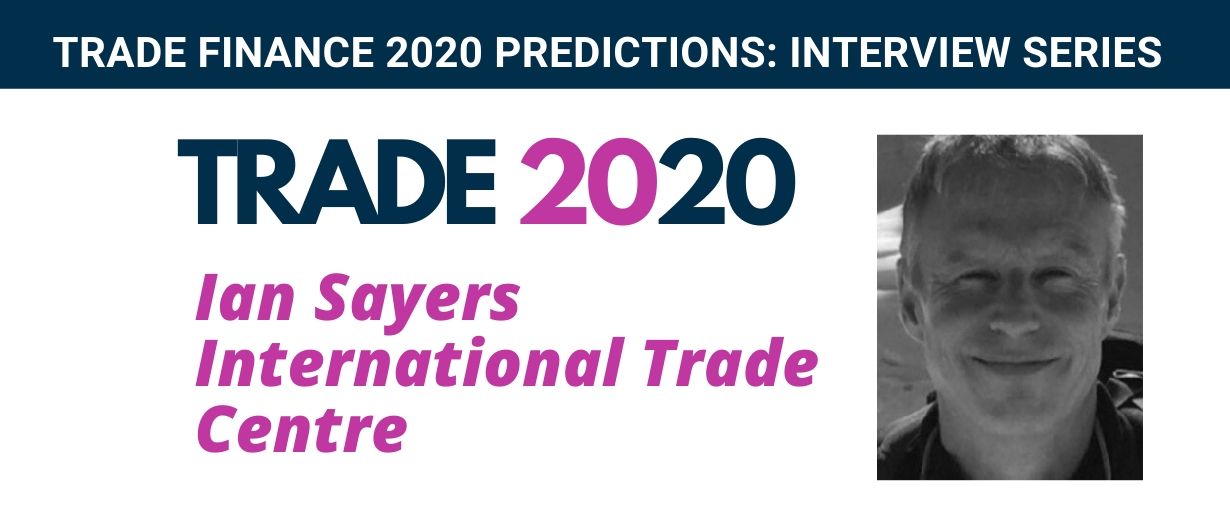2019 has been a fairly promising year of growth for some emerging and developing markets, but with continued regulatory scrutiny, correspondent banking relationships continuing to be a cut, and a sluggish growth forecast for 2020, what does this mean for trade in EDE’s?
In this 2020 interview series, TFG spoke to 20 experts in trade, receivables and supply chain finance.
An Interview with International Trade Centre

Name: Ian Sayers
Position: Head, Access to Finance
Organization: International Trade Centre
Interviewed by Nikhil Patel (NP), Analyst, Trade Finance Global
The Trade Sector in 2019
Nikhil: What were the key highlights and opportunities of 2019 from an industry perspective in trade, receivables and supply chain finance?
Macro view / geopolitical – EDEs
On the positive side, services sector growth (mainly led by tech., tourism and design) has doubled in most EDE (Emerging and Developing Economies) countries and more young people and women are starting businesses than ever before.
There are negatives though: the impact on otherwise high growth economies of the incessant rise in bilateral trade agreements, national self-interest, non-tariff barriers, import-country specific market and sustainability standards, multiplying uncertainties, raising production and export costs – leading the World Bank to reduce forecast growth in SSA (Sub-Saharan Africa) by 1.8% – down to around 2% to 4%.
The demise of the WTO appellate body adds uncertainty and leaves poorer countries without a mechanism to level the playing field against more powerful trading partners – potentially reducing market opportunities that permit growth of local value addition and flexibility in sales channels.
Technology / Innovation
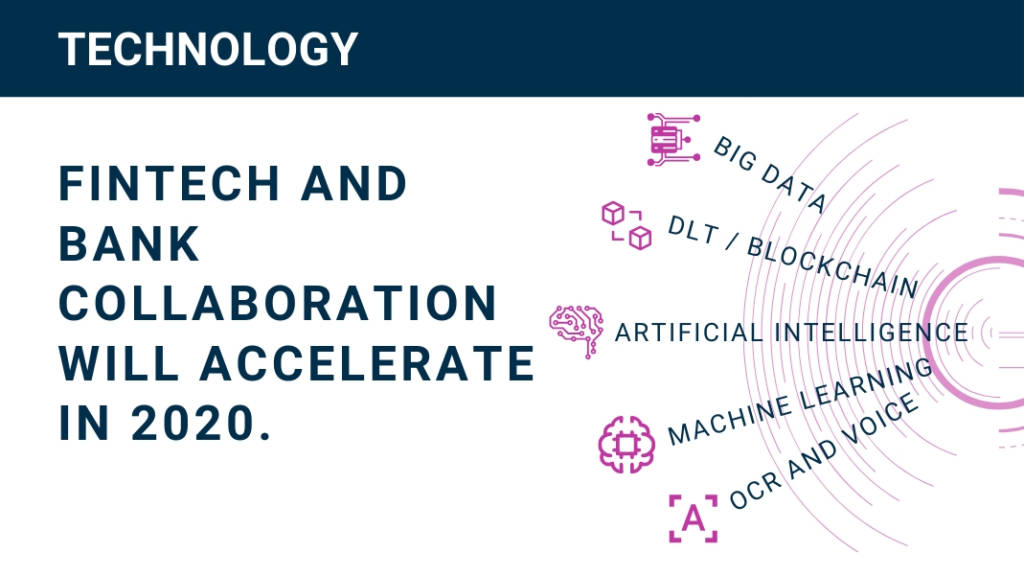
On the positive side: Open account trade and supply chain financing applications, extracting the best of distributed ledger and cloud technologies have been proven to work well – this looks good for the future of SME exporter/ processers in EDEs as it potentially reduces their cost of trade. It also allows small traders, designers and artisans to gain visibility, have a validated digital identity, permission buyers and financing partners to see verified trade transactions records and thus open the door for grants, loans e-commerce and e-payments – as if they were any other registered business. They become visible in the real world.
The downside: Capacity building of advisory and information services for MSMEs, traceability and digital identity, regulatory and policy reform, expansion of 3G and 4G is advancing too slowly for demand.
Regulation / Compliance
MSMEs rely a lot on Tier 2 and Tier 3 banks for trade transactions, payments and access to foreign currency. International correspondent and clearing bank de-risking measures started after the crisis have not yet been reversed.
Between the reduction in correspondent banks and national currency restrictions caused by indebtedness and imbalances in trade, there is a squeeze on the maximum volume of foreign trade transactions passing through banks. This has led to enterprises finding alternative non-bank solutions and a high reported gap between demand and supply of trade financing.
The rise in the open account, non-bank financing channels and digital technology risks marginalizing Tier 2 and Tier 3 banks or putting them out of business. Who will set professional standards and provide quality banking services when they are gone?
Climate change, pollution and social inclusion
For the positive:
At least four major pilot tests involving banks, donor guarantors, multi-national retail companies, technology providers and country sustainability partners were conducted successfully in 2019. These represent the first small steps that could, if expanded, incentivize improvements in trade and supply chain sustainability for thousands of supplier enterprises in EDEs.
There is progress in evening-up of gender imbalances in many EDE countries but efforts need to accelerate if targets are to be met by 2030. Despite studies showing women to be lower risk financing targets than male entrepreneurs, not enough banks, trade and supply chain financing providers adapted their facilities or extended financing to suit women in business in 2019.
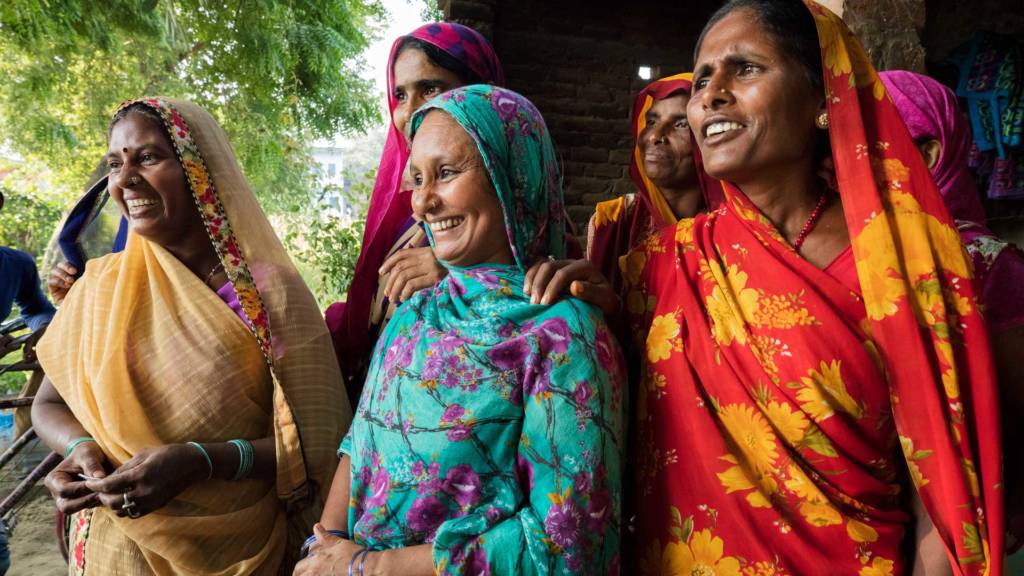
2020 Predictions in Trade and Supply Chain Finance – An International Trade Centre Perspective
NP: What are your top predictions for trade, supply chain and receivables in 2020?
Growth Sectors in Africa and South Asian
Some specific growth sectors in Africa and South Asian countries give us great hope for 2020. We believe they will also lead the way in new collaborative ways of working, innovation and creativity through expanded use of social media applications. This “Renaissance”, mixing work and entrepreneurship with national and regional cultural flair will challenge traditional IP and ownership rules, financing assessments and business governance structures – leading to the need to re-model credit ratings and collateral requirements.
If G7 interest rates remain close to zero we would expect to see a rise in receivables, payables and other forms of supply chain financing. However, very soon, buyers in those countries will come up against all the issues we face now with capital financing of environmentally and socially inclusive sustainable development: Namely, a lack of well-managed enterprises to work with. One of our hopes, therefore, for 2020 is for a rise in donor-funded capacity-building projects that matches buyers’ and banks appetite for short-term financing deals in EDEs.
Technology / Innovation
By this time in 2020, we will be looking back at a year that will be seen as a turning point in the use of distributed ledger, AI, cloud and machine learning technologies in EDEs. Emerging economies will, by necessity, lead on innovation of practical applications developed to serve urban masses and rural communities making marketing communications and distribution easier and reducing the transaction and administration costs of doing business. Apps will be localized and, at the same time, diminish the impact of borders. Digitally verifiable individual product traceability will become essential for reducing payment and transaction risks
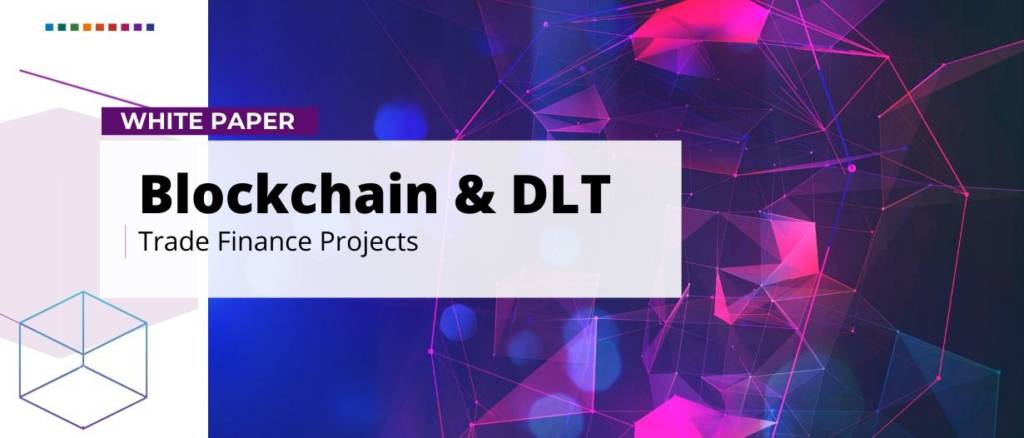
Regulation / Compliance
We see already the frustrations of young people boiling over in places where the regulatory and policy ecosystem starts to look illogical or just gets in the way of growth and improvement of sustainability and social inclusion. Updating of the systems in EDE countries is not happening fast enough. In many cases, this is due to a lack of motivation to collaborate across the ministerial territory, but also it can be due to legacy agreements designed to support major infrastructure projects or political interests. Our forecast for 2020 is that technology and people power will challenge established orders – but that improvements in financing ecosystems will only start to filter through in 2021, slowing the expansion of T&SCF mechanisms.
NP: In 200 words, what are the biggest challenges in trade, receivables and supply chain finance you predict for 2020?
As in previous technology booms, many major users are attempting to grab market share and users by offering “exclusive” or “membership” participation in open-account trading and financing platforms. This, together with the proliferation of international buyers’ sustainability standards compliance requirements means that exporters need to engage staff just to satisfy the needs of many individual platforms.
This rise in the complexity and cost of servicing each international buyer and the rise in climate and trade policy uncertainties is reducing the velocity of sustainable growth – the opposite of the intentions.
Without an expansion of affordable business development advisory services, new technologies, sustainability and financing practices risk marginalizing less well educated, or “previous generation” export supply chain, entrepreneurs.
New fraudulent practices or “scams” will multiply increasing risks for those less aware and may hold back the uptake of reliance on new technologies and financing. We foresee some major international cyberattacks further undermining confidence, even in systems used by major international banks.
Should interest rate differentials and volatility increased in the major trading blocks, banks will struggle to keep financing rates within reach of SME exporters and their suppliers. In turn, national banks, especially in the severely indebted countries, would need to raise their rates and control foreign exchange movements higher costs and a contraction of SME growth and new business in EDEs.
In all open account schemes, the most difficult challenges revolve around the high costs of verification of digital identity, traceability and capacity building of intended financing recipients.
NP: What are the key priorities for the International Trade Centre in 2020?
ITC has used 2019 to prove its capabilities in many new areas of financing for sustainable MSME growth. This includes our SheTrades Invest initiative for expanding financing to exporting women entrepreneurs, our advisory capacity and facilitation of financing guarantees for green enterprise development projects in Africa, our mentorship, mini-grants and mini loans initiatives for young trading entrepreneurs, ITCs new sustainability networks tool for potential validations of > 60,000 sustainable suppliers and Global trade help desk to name but a few.
2020 should be a year when donors realize that “Blending” and structured financing is not something to take the place of traditional grants that fund capacity-building projects but are financing tools that complement and strengthen typical field project work to raise the capabilities of country ecosystems. Many recent studies show that there are insufficient enterprises managed to the right standard and insufficient good quality projects to absorb the financing that is available by a large factor.
Accelerating the scaling up of sustainable enterprise development and trade practices is possible if stakeholders are willing to blend not just financing but also know-how. There is enough financing, enough know-how but activities are currently too fragmented to reach their potential impact.
NP: What’s your top prediction for a technology that you think will truly kick off / have the most success in 2020?
In the countries where ITC works, practical cloud-based applications based on Distributed Ledger Technology will be the real “game-changers”. These technologies will take care of cyber threats, poor regulatory and security practices for individuals and enterprises that need to store inimitable transaction records, improve claims authenticity and protect original intellectual property.
Why?
Because it is the only way that start-up and growth enterprises can get financing, be paid and get their creative ideas recognized outside of their own country. This builds hope, adds new value in economies that cannot easily be silenced by self-interests
Read our trade finance 2020 predictions here
